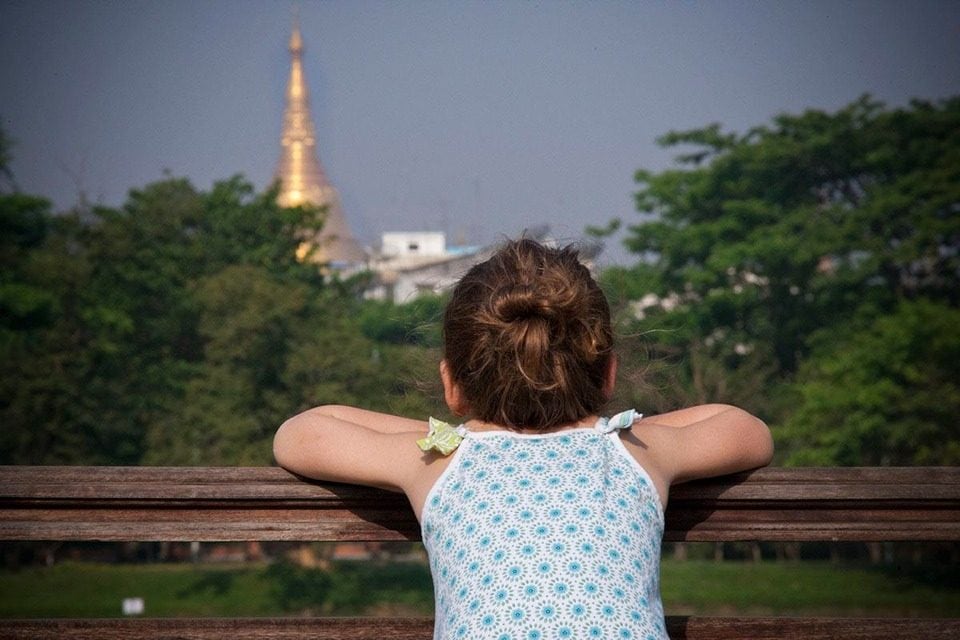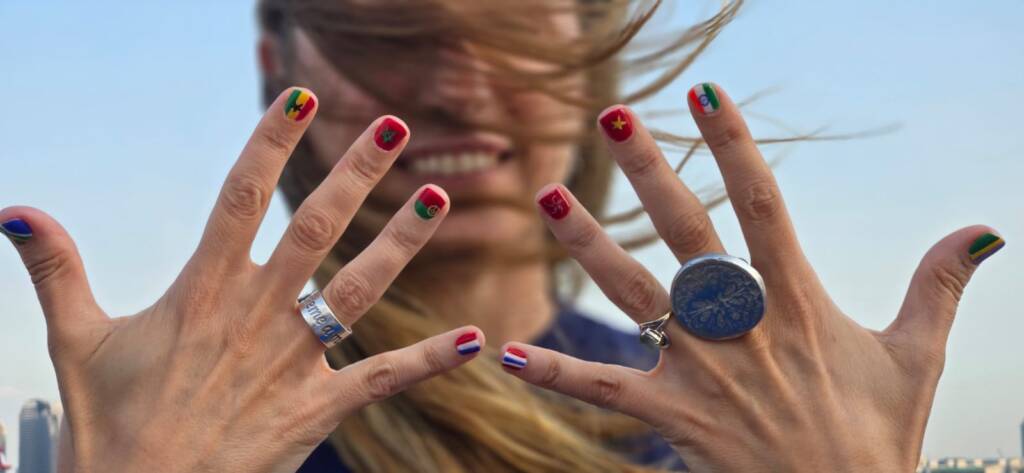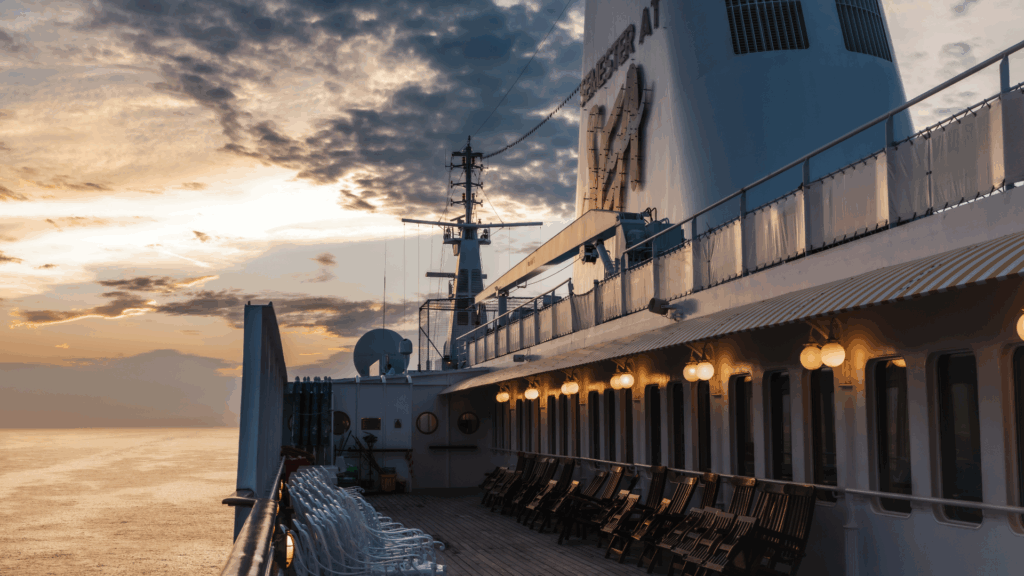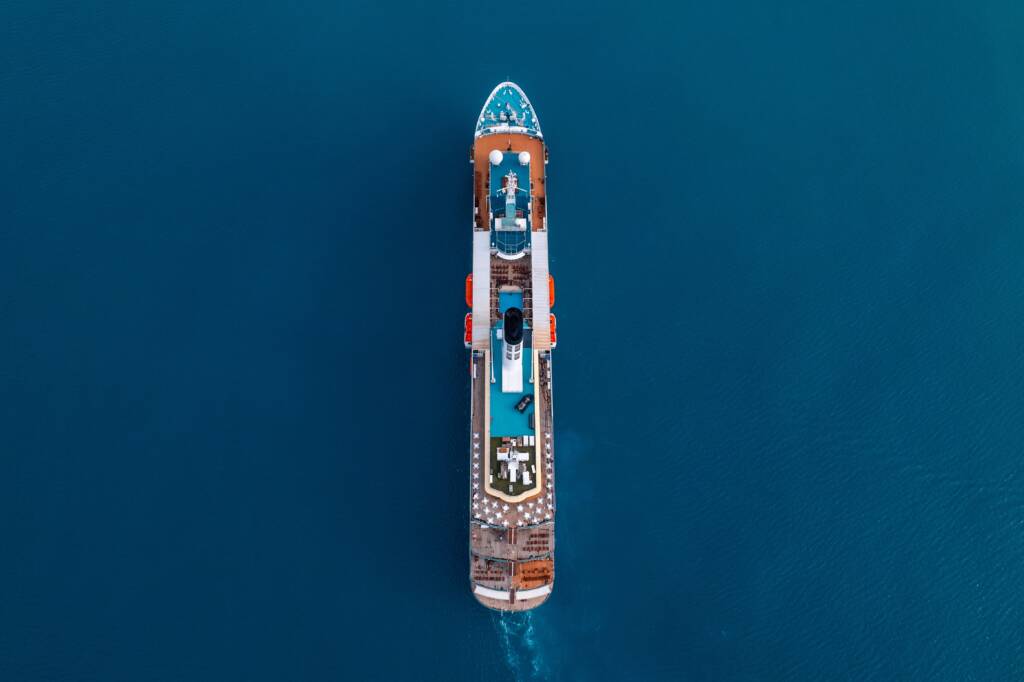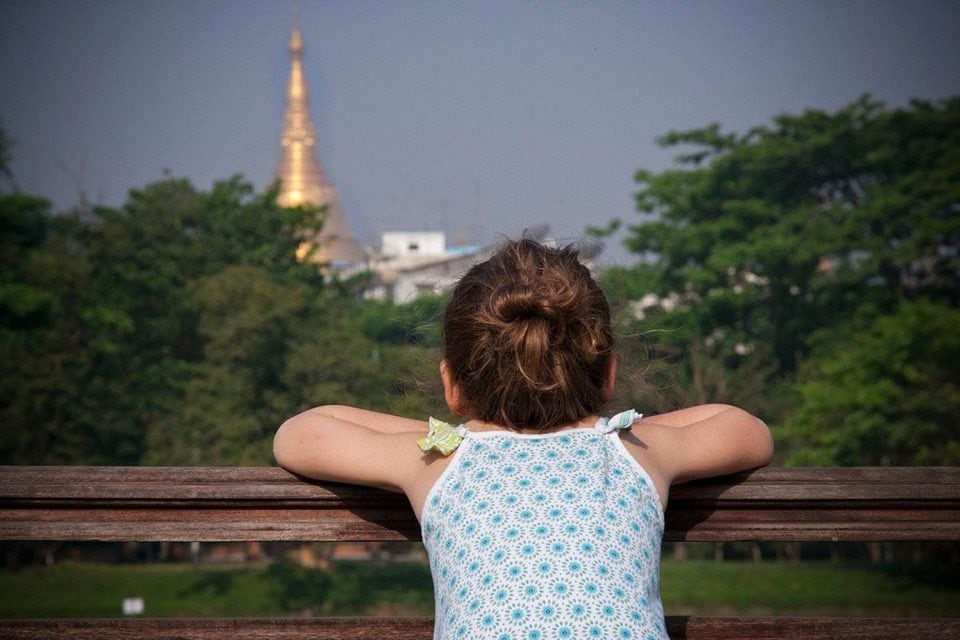
From the moment we stepped off the ship, things felt different. The port was busier, the road to Yangon was swarming with ten times more vehicles than I remembered, and amidst a sea of new buildings and shops, I saw more than one monk talking on his cell phone. As we drove past the Shwedagon Pagoda, I remember looking around and thinking to myself: This is not the same place I visited 8 years ago.
My first visit to Burma had also been with Semester at Sea. I was 26 years old, working as the AV Coordinator on the Fall 2005 Voyage. That was the same voyage in which Archbishop Desmond Tutu, sailing with us between Brazil and South Africa, reminded us about the human rights violations and political oppression that was taking place in the country at that time. He encouraged us all to think deeply about how our presence there might be seen as a reinforcement for the current regime. He also reminded us that the leader of the opposition, Nobel Peace Prize Laureate Aung San Suu Kyi, was still under house arrest.
Burma was a mystery back then – a reclusive country with a government that had a terrible record on human rights, and where ethnic conflicts along its borders continued in one of the longest ongoing wars in the world. After much discussion and soul-searching, I stepped off the ship to see Burma for myself.
Our experience in 2005 turned out to be overwhelmingly educational. The peaceful parts of Burma made it one of the most visually striking and culturally interesting places I had ever visited. From the shining gold top of the Shwedagon Pagoda, to the monks lining the streets each morning humbly ready to ask for rice to be placed in their alms bowls. From the thousands of pagodas appearing at sunrise in Bagan to the fishermen in Inle Lake who rowed their boats using only their feet. This Burma seemed untouched by the world, with an immensely warm and friendly local population. A few locals did open up about the government they lived under, but we experienced a unique beauty as we wondered in the back of our minds: What are we not seeing?
As frequently happens on Semester at Sea, the countries we experience become a part of us, and our visits provide a framework for a lifetime of learning. Our ears perk up every time we hear one of these countries mentioned in the news, and I felt that most acutely with Burma. Many of us from that voyage became invested in the future of the country, and followed the reports with great sadness as people were killed in the Saffron Revolution, as hundreds of thousands of people died during Cyclone Nargis, and as Aung San Suu Kyi’s prison sentence was once again extended.
But somehow, things started to change. In a major victory, Suu Kyi was finally released, and the country appeared to start opening up. The U.S. reestablished diplomatic ties, and President Obama visited at the end of 2012. Semester at Sea added Myanmar back on to the itinerary after a six-year hiatus, and I now had an opportunity to go back.
I returned to Burma a different person, now married with two little kids in tow, and Burma was different, too. There seems to be tremendous yet cautious optimism in Yangon: locals tell us that the secret police and censorship boards have largely been dismantled, there is active courting of outside investment and an opening up to the outside world, and the standard of living has visibly improved throughout the city.
My personal highlight of the trip was having Archbishop Desmond Tutu be part of our community that made our way up the Irrawaddy River. On our second day in port, one Nobel Peace Prize Laureate finally met another when he joined Aung San Suu Kyi at her home, a meeting that would not have been possible just two years earlier. News of the event spread quickly, as we walked past newspaper after newspaper in Yangon with a picture of the Archbishop and his ever-present, radiant smile, dressed in his rose-colored Anglican vestments, with The Lady’s hands in his, standing together as a symbol of hope.
It was a brief moment to celebrate, but as the Archbishop told us, “I come to Burma with a heavy heart.” While there is hope around Yangon, there is much reason for concern, as Burma is far from being a free country. Violent ethnic clashes and attrocities largely due to government policy continue, and there is still much work to be done. I encourage you to read the Archbishop’s remarks at the American Center in Yangon to invited leaders of the 137 ethnic minorities (transcript here), where he shared his perspective on the situation, as the country has a long, long way to go.
So I leave Burma for the second time with a newfound sense of appreciation for my first visit. I am in awe of the speed at which the country is modernizing, and I feel fortunate to have been here with my family at this point in its history. I hope the country extends its reforms to the oppressed minorities around its borders. I hope someday we’ll have an opportunity to come back to a country that is truly free.
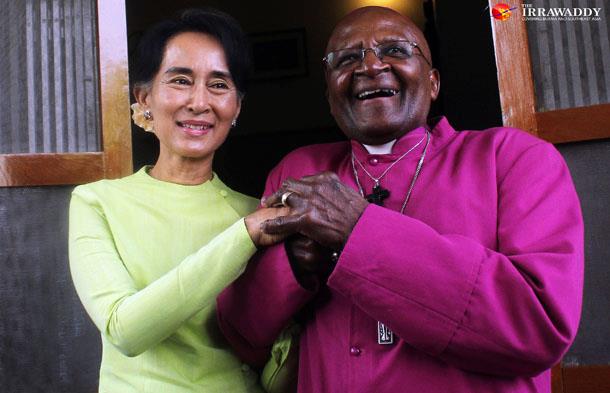 Photo: Jpaing / The Irrawaddy. Read more about the visit on The Irrawaddy:http://www.irrawaddy.org/
Photo: Jpaing / The Irrawaddy. Read more about the visit on The Irrawaddy:http://www.irrawaddy.org/
